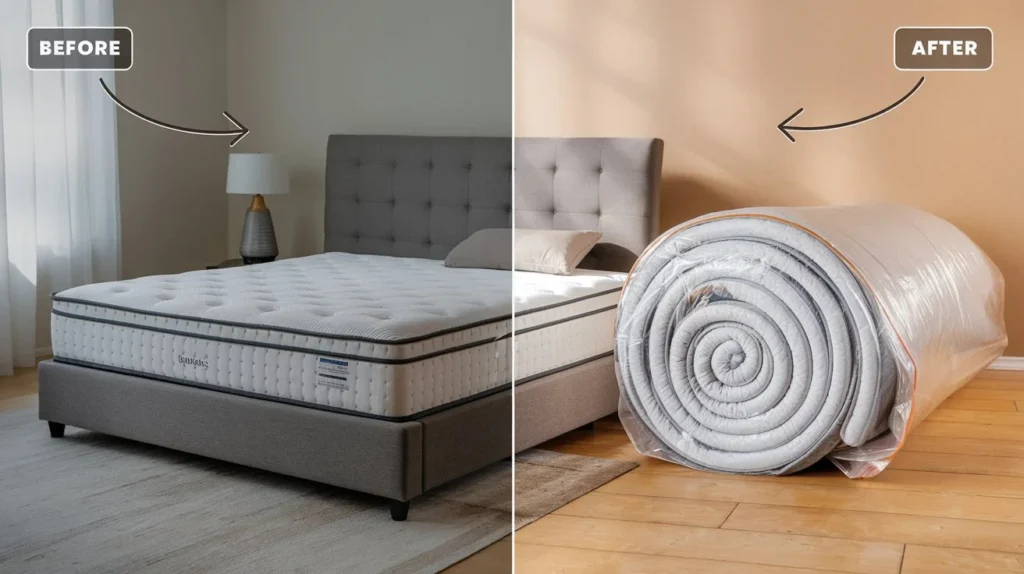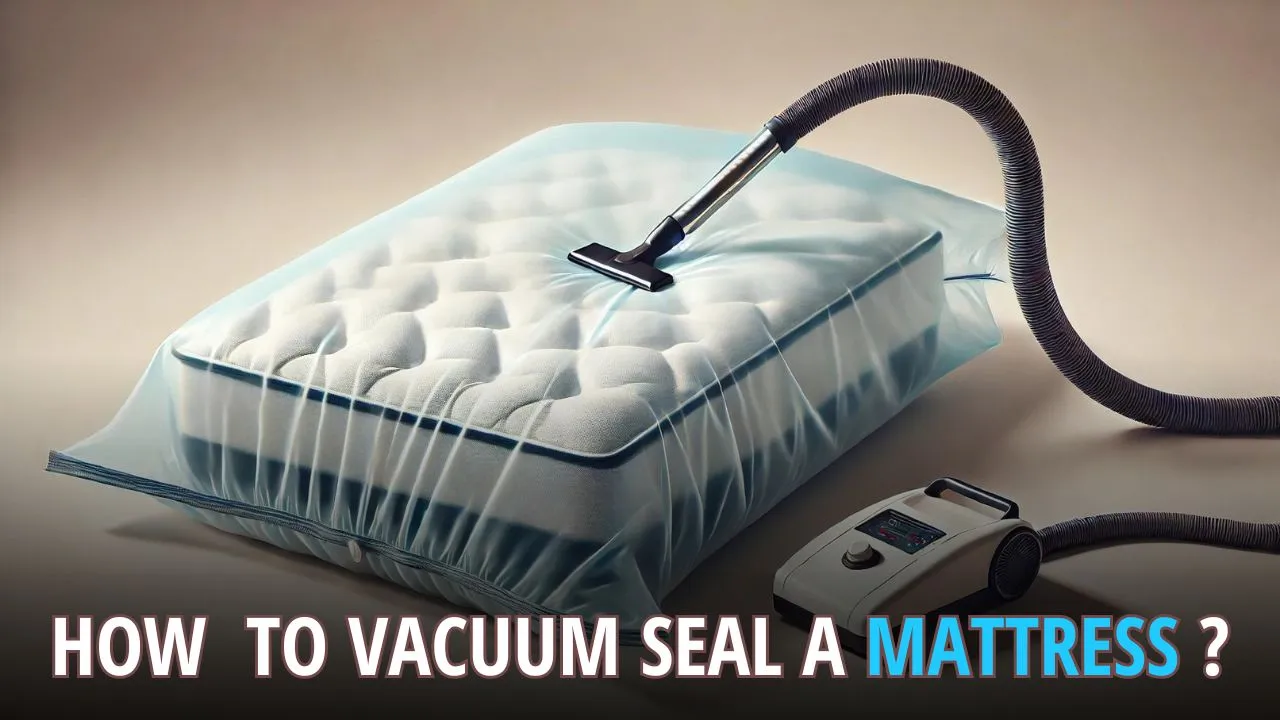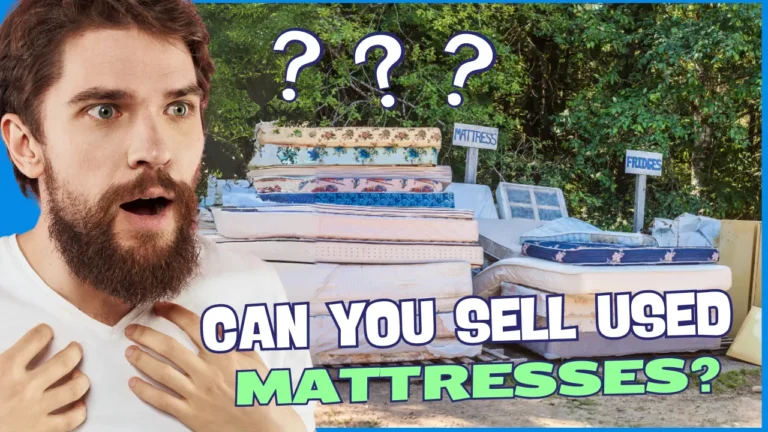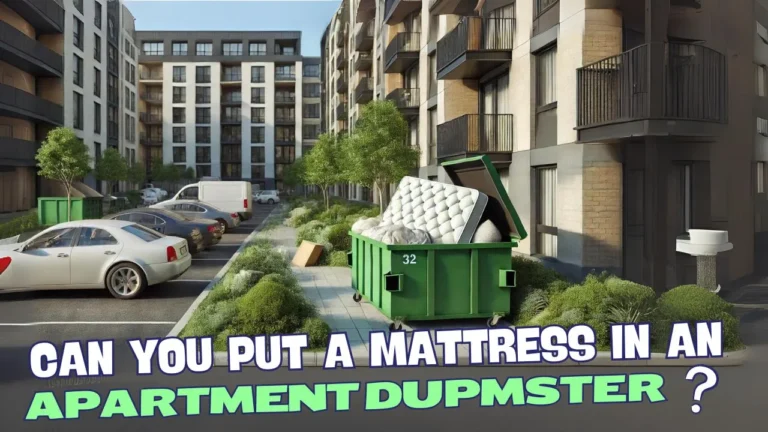How To Vacuum Seal a Mattress? 7 Easy Steps to Save Space & Money
Vacuum sealing your mattress is a great way to save space and keep it safe when you’re moving or storing it for a while.
It also helps keep your mattress in great shape for longer.
So, if you are looking for a simple yet effective way to handle your mattress, keep reading the post till the end.
In this guide, we’ll show you exactly how to vacuum seal a mattress so you can save space and make your move a lot easier.
Key Takeaways
Can You Vacuum Seal a Mattress?
Yes, you can vacuum seal a mattress, but there are a few things you should know before you do it.
Vacuum sealing a mattress means using a vacuum to suck out all the air, making the mattress smaller and easier to move or store.
This is especially useful for memory foam mattresses since they can go back to their original shape once you open them up.
Things to Keep in Mind
Vacuum sealing a mattress can be a handy way to make it smaller for storage or moving, but there are some things you should know before doing it.
Type of Mattress
Not every mattress is good for vacuum sealing. Memory foam and latex mattresses work well because they can handle being compressed.
But if your mattress has springs or coils, it might not compress properly, and you could end up damaging it.
Vacuum Sealing Bags
Make sure you’re using strong, good-quality vacuum sealing bags that are made for big items like mattresses.
The bag needs to be tough so it doesn’t get torn or punctured while you’re sealing it.
Benefits of Vacuum Sealing a Mattress
Vacuum sealing your mattress can make a big difference in keeping it in good shape. Here’s why it’s a smart idea:

#1- Saves Space
When you vacuum seal your mattress, it shrinks in size. This is super helpful if you live in a small place or need to store your mattress for a while.
It also makes moving easier because a smaller mattress is much simpler to handle.
#2- Reduces transportation costs
A compressed mattress takes up less space in moving trucks.
#3- Keeps Dust and Bugs Away
Vacuum sealing creates a tight barrier around your mattress, keeping out dust, mites, and other pests.
This is especially important if you plan to store your mattress for a long time since it stops these things from getting inside and ruining it.
#4- Easy to Move
A vacuum-sealed mattress is easier to carry and move around.
Whether you’re moving to a new home or just rearranging your room, handling a vacuum-sealed mattress is a lot less work.
#5- Protects Your Mattress
Vacuum sealing helps keep your mattress clean and fresh.
It stops mold, mildew, and bacteria from growing, so your mattress stays healthier and lasts longer.
What You Will Need to Vacuum Seal a Mattress?
Vacuum sealing your mattress is a smart way to save space and keep it safe during a move or while it’s in storage.
Here’s a list of the things you’ll need to do the job:
| Material | Purpose |
| Vacuum cleaner with hose attachment | To remove air from the mattress bag, compressing the mattress |
| Sealable plastic mattress bag | To encase the mattress and maintain the vacuum seal |
| Ratchet straps | To secure the rolled-up mattress after compression |
| Duct tape or packing tape | To reinforce the seal on the mattress bag |
| Silica desiccant packets (optional) | To absorb moisture and prevent mold growth during storage |
| Helper (recommended) | To assist with handling the mattress and ensuring even compression |
IMPORTANT TIP
Vacuum sealing works best with foam, latex, or some hybrid mattresses because they can handle being compressed and will return to their normal shape after unsealing.
However, it’s not a good idea to vacuum seal an innerspring mattress because it could get damaged permanently.
How To Vacuum Seal a Mattress? (Step-by-Step Guide)
Vacuum sealing a mattress is a great way to save space and protect it during a move or while in storage.
This method works best for foam or latex mattresses, which can handle the compression without getting damaged. Follow these simple steps to get started:
Preparing Your Mattress
Before sealing, it’s important to prepare your mattress properly:
- Remove Bedding: Take off all sheets, pillows, and covers, so you’re working with just the mattress.
- Clean the Mattress: Clean your mattress thoroughly to get rid of any dirt or dust. This prevents sealing in any unwanted particles.
- Inspect the Mattress: Check for any damage, like rips or tears, since vacuum sealing could make them worse.
Step 1: Place the Mattress in the Bag
Start by putting the mattress in a sealable plastic bag that fits well.
Make sure the bag is durable and can handle the compression.
Lay the mattress flat inside the bag to ensure even compression.
Step 2: Attach the Vacuum Hose
Find the valve on the bag and connect the vacuum hose to it.
Seal the area around the valve with tape to make sure it’s airtight.
This step is crucial for getting a proper vacuum seal.
Step 3: Remove Air from the Bag
Turn on the vacuum cleaner to start removing the air from the bag.
The mattress will begin to shrink as the air is sucked out.
This process can take anywhere from 30 minutes to an hour, depending on the size of the mattress.
Press lightly on the mattress to help keep it flat and even.
Step 4: Roll Up Your Mattress
Once most of the air is out, tightly roll up the mattress.
Use ratchet straps to keep it securely rolled.
This not only saves space but also makes the mattress easier to carry and move.
Step 5: Seal the Bag
After compressing and rolling the mattress, seal the bag tightly using a double zip and tape.
Ensure the seal is airtight to keep the mattress compact until you’re ready to use it again.
This method also protects your mattress from water damage, dust, and pests.
Unsealing and Decompression
When you are ready to use the mattress again:
- Carefully cut open the bag and remove the mattress. It will start to expand as soon as it’s exposed to air.
- Wait at least 8 hours before using the mattress, but for the best results, let it decompress for 24 hours.
NOTE
Just keep in mind that this process works best for foam or latex mattresses. Avoid vacuum sealing innerspring mattresses, as it can damage them permanently.
How Long Does it Take to Vacuum Seal a Mattress?
Vacuum sealing a mattress can be really useful, especially if you’re moving or storing it. But how long does it actually take?
Timeframe
On average, vacuum sealing a mattress takes about 30 minutes to an hour. The exact time can vary based on a few factors.
Factors That Can Affect the Time
- Preparation: If you need to clean your mattress first, that will add some extra time.
- Materials: If you don’t have everything you need ready, it might take longer.
- Breaks: Taking breaks during the process will naturally make it take more time.
- Mattress Type: Vacuum sealing works best for foam, latex, or some hybrid mattresses. Innerspring mattresses shouldn’t be vacuum sealed, as it can permanently damage them.
After Unsealing: Once you have unsealed your mattress, it should fully expand within a few hours, and you can usually sleep on it the same day.
However, it’s best to wait 24 hours to let the mattress fully regain its shape before using it.
How Long Can You Vacuum Seal a Mattress?
It is important to know how long you can keep a mattress vacuum-sealed without affecting its quality.
Most experts recommend that a mattress should not stay vacuum-sealed for more than 2 weeks to 3 months.
This timeframe helps ensure that the mattress retains its original shape and comfort. Keeping a mattress sealed longer than this can lead to a few issues:
- Material Degradation: Over time, prolonged compression can break down the materials inside the mattress, especially in memory foam and latex, which are more resilient than innerspring mattresses.
- Permanent Deformation: If left sealed too long, some mattresses might not return to their original shape, which can make them less comfortable and supportive.
- Warranty Issues: If you exceed the recommended storage time, it might void the mattress warranty, leaving you without any coverage if problems arise.
TIP
For more tips on storing vacuum-sealed mattresses, check out this helpful article.
Factors That Affect How Long a Mattress Can Stay Vacuum Sealed
Several things can influence how long a mattress can remain vacuum-sealed:
- Material Composition: Different mattress materials react differently to compression. Memory foam and latex generally handle longer periods of sealing better than innerspring mattresses.
- Storage Conditions: The environment where you store the mattress matters. High humidity and extreme temperatures can speed up material degradation.
- Manufacturer Guidelines: Always check the mattress manufacturer’s recommendations. They may have specific advice based on the materials and construction of their products.
Can You Vacuum Seal All Types of Mattresses?
Vacuum sealing a mattress can be a great way to save space, but not all mattresses are suitable for this process.
Let’s break down which types of mattresses can be safely vacuum sealed and which ones should be avoided.
| Mattress Type | Suitability for Vacuum Sealing | Additional Considerations |
| Foam | Highly Suitable | Maintain uniform pressure during sealing to avoid damage. |
| Latex | Very Suitable | Forgiving during compression, minimal risk of damage. |
| Hybrid | Conditionally Suitable | Care is needed to avoid damage from both springs and foam. |
| Coil Spring | Not Recommended | Risk of losing comfort and support if over-compressed. |
Types of Mattresses You Can Vacuum Seal
Memory Foam Mattresses
Memory foam mattresses are a good option for vacuum sealing.
These mattresses are made from foam that molds to the shape of your body, providing personalized comfort.
They can be easily compressed and will return to their original shape once unpacked.
Latex Mattresses
Like memory foam, latex mattresses are also suitable for vacuum sealing.
Made from natural or synthetic rubber, these mattresses are both comfortable and supportive.
They handle compression well and bounce back nicely after being unsealed.
Hybrid Mattresses
Hybrid mattresses combine the support of innerspring coils with the comfort of foam or latex.
Some hybrid mattresses can be vacuum sealed, but it’s important to check with the manufacturer first to make sure the process won’t damage the mattress.
Gel Foam Mattresses
Gel foam mattresses are infused with gel particles to help keep you cool while you sleep.
These mattresses, like memory foam and latex, can be vacuum sealed without problems.
Pocket Sprung Mattresses
Pocket-sprung mattresses have individual springs encased in fabric pockets.
Some of these mattresses can be vacuum sealed, but again, it’s best to check with the manufacturer to ensure that the springs won’t be damaged.
Mattresses You Shouldn’t Vacuum Seal
Innerspring Mattresses
Innerspring mattresses are not recommended for vacuum sealing.
The compression process can damage the springs, leading to loss of support and comfort.
Additionally, vacuum sealing may harm the mattress’s flame barrier, which is a safety feature required by law.
Maintaining the Vacuum Seal
Maintaining the vacuum seal on your mattress during storage is crucial to keep it in good condition. Here are some tips to ensure the vacuum seal holds:
Choose the Right Mattress Bag
Select a vacuum-seal bag that comfortably fits your mattress.
These are often labeled as ‘mattress bags’ and come in various sizes to accommodate different mattresses.
Ensure that the bag has a valve that matches the diameter of your vacuum’s hose.
Clean Your Mattress
Before sealing, it’s crucial to clean your mattress thoroughly to remove any dirt, dust, or debris.
Vacuuming the surface and using a mild cleaning solution can help eliminate any odors or stains.
Additionally, ensure the mattress is completely dry to prevent mold or mildew growth.
Use a Vacuum Cleaner
A vacuum cleaner or electric pump will help you suck the air out of the mattress and compress it.
Make sure the vacuum hose attachment is compatible with the valve from the bag.
Seal the Bag Properly
To ensure that the bag is airtight, you can use tape to seal it near the valve.
Once you’re satisfied with the compression of your mattress, turn the vacuum off, and seal the valve on the mattress bag.
Use Ratchet Straps
Proper placement of ratchet straps can better help you move your packed mattress.
Also, prevent the plastic bag from breaking and causing the mattress to re-expand.
Store the Mattress Flat
Try to keep it as horizontal as possible, otherwise you may damage the material and also void the warranty.
Check the Mattress Periodically
If you are storing your mattress for a long time, it is better to unwrap it once in a while. That will help to air out the mattress.
But remember to seal it properly afterward.
Troubleshooting Common Issues During Vacuum Sealing
Vacuum sealing a mattress can be complicated, but don’t worry— we have solutions for the most common problems you might face.
Damage to Innerspring Mattresses
Vacuum sealing can permanently damage innerspring mattresses because the pressure can harm the coils.
It’s best to use this method for foam or latex mattresses instead.
Loss of Comfort and Support
After vacuum sealing, a mattress might not be as firm and could lose its ability to bounce back or maintain its shape.
Mold and Mildew Growth
If any moisture is trapped in the bag, it can create the perfect environment for mold and mildew.
Ensure your mattress is completely dry before sealing it.
Off-Gassing Odors
New mattresses, especially those vacuum-sealed in a box, might emit odors due to volatile organic compounds (VOCs) during off-gassing.
Mattress Not Expanding
If the corners of your memory foam mattress aren’t expanding after unboxing, try adjusting the room temperature to at least 68°F to help it fully expand.
If the issue persists, gently walk on it to help redistribute the foam.
Cost Comparison
Vacuum sealing your mattress yourself costs about $30-50 for the materials you’ll need.
On the other hand, hiring professional movers to handle a non-sealed mattress can cost anywhere from $100 to $300.
This difference can really add up, especially if you’re moving more than one mattress or need to stick to a budget.
Let’s break down the costs:
| Method | Estimated Cost | Notes |
| DIY Vacuum Sealing | $30-50 | Covers the cost of the vacuum bag, tape, and straps |
| Professional Movers (non-sealed mattress) | $100-300 | The cost depends on the size of your mattress and how far you’re moving |
By choosing to vacuum seal your mattress yourself, you could save between $50 and $250 per mattress.
This way, you save money and have more control over how your mattress is handled during the move.
TIP
Even though the initial cost of vacuum sealing materials might seem a bit high, you can often reuse these materials for future moves or to store other big items. This makes it a smart choice in the long run.
Final Thoughts
In this guide, we’ve walked you through the process of vacuum sealing your mattress.
This technique is highly effective for many types of mattresses, offering benefits like space-saving and protection from dirt, dust, and allergens.
Once unsealed, vacuum-packed mattresses can return to nearly their original size, maintaining both comfort and structure.
However, different types of mattresses—like memory foam, latex, hybrid, and innerspring—have unique considerations when it comes to vacuum sealing.
While memory foam and hybrid mattresses can be safely sealed, innerspring mattresses require extra caution to avoid potential damage.
Vacuum sealing is an excellent solution for moving or storing your mattress.It’s important to weigh the pros and cons of vacuum sealing.
While it’s a convenient way to protect your mattress, following the proper guidelines is crucial to avoid any risks.
We hope this guide helps you vacuum seal your mattress correctly, ensuring it stays in great condition for any situation.
If you’ve tried vacuum sealing your mattress, or if you have any additional tips and tricks, share your experiences in the comments section.
Frequently Asked Questions
1. Can you vacuum seal a mattress with a regular vacuum?
Yes, you can use a regular vacuum to vacuum seal a mattress, but it’s better for foam or latex mattresses.
These types of mattresses can handle being compressed without getting damaged.
Innerspring mattresses aren’t a good choice for this because they might get ruined if you try to vacuum seal them.
2. Can vacuum sealing damage my mattress warranty?”
It might. Always check with the manufacturer before vacuum sealing to ensure you don’t void the warranty.
3. How do you shrink a mattress with a vacuum?
To shrink a mattress, you’ll need a vacuum-seal bag big enough to fit the mattress.
Put the mattress inside the bag, insert the vacuum hose, and turn the vacuum on.
This will start compressing the mattress, making it flatter.
Once the mattress is as flat as possible, quickly remove the vacuum hose and seal the bag tightly to keep the air out.
4. How do you air-seal a mattress?
Air-sealing a mattress is done by using a vacuum-seal bag.
After compressing the mattress with the vacuum, you need to quickly seal the bag to keep the air from getting back in.
This will help maintain the compressed state of the mattress.
5. How do you vacuum a mattress?
When vacuuming a mattress, it’s best to use the upholstery attachment or a soft brush attachment on your vacuum.
Start at the top of the mattress and move down, making sure to cover all the overlapping parts.
Pay extra attention to the seams and edges, as these areas tend to collect the most dust, dirt, and allergens.
6. Is it good to vacuum your mattress?
Yes, vacuuming your mattress is a good habit. It helps remove dust mites, allergens, dirt, and even pet hair, which keeps your sleeping environment cleaner and healthier.
Regular vacuuming can also help with allergies by getting rid of common triggers like pet dander.
7. How long can a mattress be vacuum sealed?
A mattress should stay vacuum-sealed for no more than 2 weeks to 3 months.
Keeping it sealed longer can cause material degradation, and permanent deformation, and might void the warranty.
Always check the manufacturer’s guidelines for specific recommendations.

About Khalid Ansari
Khalid has a deep understanding of the challenges of getting a good night’s sleep, gained through years of personal experience and extensive research. At Slumberaddicts, he shares his expertise on sleep products, from mattresses to natural sleep aids, helping lead the editorial team. Khalid is passionate about helping others improve their sleep quality through practical advice and product reviews. When he’s not testing the latest sleep innovations, Khalid loves traveling, reading books, and watching cricket.

About Khalid Ansari
Khalid has a deep understanding of the challenges of getting a good night’s sleep, gained through years of personal experience and extensive research. At Slumberaddicts, he shares his expertise on sleep products, from mattresses to natural sleep aids, helping lead the editorial team. Khalid is passionate about helping others improve their sleep quality through practical advice and tips. When he’s not testing the latest sleep innovations, Khalid loves traveling, reading books, and watching cricket, enjoying every moment with family and friends.



